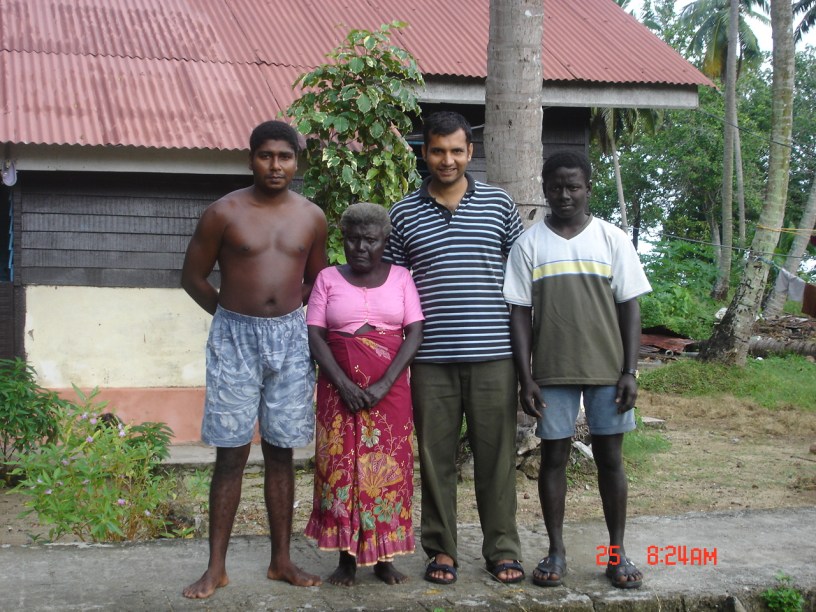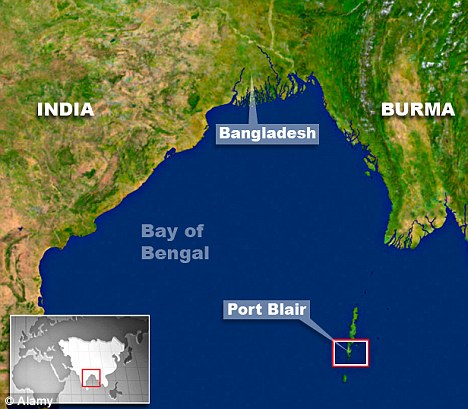THE RISE AND FALL OF THE GREAT ANADAMANESE
It is said that the demon does not strike only once, it comes back.
There are four ancient indigenous communities living in Anadaman Islands since time immemorial. One of these communities is Great Andamanese (Negrito Stock) which were originally ten different tribes but due to various reasons their population dwindled and therefore, they are now collectively called Great Andamanese. Great Andamanese at one point of time numbered more than 10,000. By 2006 they are reduced to just 43 people out of whom only 27 were adults (11 males and 16 females) and rest were children. In January 2010, the oldest surviving member of the community ‘Boa Senior’ died, and with that the population has stagnated at 50 individuals now.
1858 was that fateful year when the self-sufficient and non-interfering Great Andamanese came in contact with the real outsiders. Though they had occasional encounters or skirmishes with outsiders in their territory like Jarawa people (another Negrito community) of the South Andamans and the weather weary sailors of the shipwrecked ships. But it was not so much fatal as it was 1858 onwards. This was the year when British imperialists arrived in Andaman and Nicobar Islands to extend their colonial tentacles in the Indian Ocean.
In the same year, the British started building the vast penal settlement at Port Blair and also their administrative seat at Ross Island, near Port Blair.
The Great Andamanese had never seen such significantly different outsiders as the British colonizers. That’s why they named them Lao in their language (Colorless Ghosts).
The year passed with a lot of bloodshed and the 10 different tribes of Great Andmanese community resolved their differences and planned a major attack on the intruders in their territory.
In 1859 they attacked the British Police Post at Aberdeen Bazaar at Port Blair in full force but their attack was foiled and the Great Andamanese were mercilessly killed by the barrage of bullets. This battle later went down in history as the ‘Battle of Aberdeen’. Their distrust in outsiders became more pronounced when they came to know, that the escaped Indian convict (Named Doodhnath) from the Cellular Jail, to whom they had become friends and was given shelter by them, had switched sides before the battle and informed his colonial masters about the impending battle.
In the years to come, British colonizers led many punitive expeditions in which a number of Andamanese were killed. They forcibly transported Santhal and Munda people from Central-Eastern India (Now Jharkhand & Bihar) to help clear the marshy forest and lead the expeditions. Now locally called ‘Ranchi people’, they were excellent ground clearers and helped them find the hiding Great Andamanese families. Later this expedition groups were named Bush Police.
Finally in front of this indomitable enemy, the Great Andamanese lowered their arms and extended their hands of goodwill. But by that time the population of the Great Andamanese had decreased considerably. Their total population, which was more than 7000 before the outsiders arrived, dwindled to 3500 by the time of friendly contact with the colonizers.
This friendly contact which was more favorable to colonizers than the Great Andamanese, also brought new types of enemies in the guise of epidemics, unknown diseases and addictions. The ranks of the colonial force developed sexual liaisons with the Great Andamanese women, who eventually contracted venereal diseases like Syphilis etc. This resulted in various untimely deaths among the Andamanese men and women.
The extent of the epidemic was so much gruesome that even the colonizers wanted to fight it by sending the Great Andamanese back to the forest.
But it was too late by that time; the Great Andamanese had also developed addiction of modern vices like opium, marijuana, liquor etc from the company of Indian and Burmese and Karen laborers. This led to further decline in their population from the outbreak of diseases like tuberculosis and cholera.
Their increasing reliance on foreign food also led to further decline in their health and immunity.
By the end of the 19th century their population has reached the bottoms and when in 1930, a head count was conducted there were less than 20 Great Andamanese left.
After India’s independence they were camped at Bluff Island (1949) by the forest department which led to certain stability in their population.
In 1969 they were finally settled at Strait Island (1969) and their population was around two dozen at that time. Someone aptly named Strait Island as ‘Government Breeding Center’, as the gradual increase in population began from there.
In the year 2006 the total Great Andamanese population numbered more than 43 and in 2010 more than 50, thanks to the ‘efforts’ of the tribal welfare and police department.
Almost every Great Andamanese woman of reproductive age has more than 6 children and when you inquire this from the Great Andamanese men, they mostly deny their complicity about it.
It is startling but sad revelation that, except a few almost all Great Andamanese children today are from non-Andamanese fathers. In fact the Andaman Tribal Welfare Department has taken pride in showing that, it’s due to their ‘efforts’ the Great Andamanese population has achieved this momentum.
As a matter of fact, it is also necessary for their existence cause who will they cater to if there are no Great Andamanese left. They say that those children are sent by God’s hand.
Yes it is true here but only that the God has changed name here. It has come in the form of outsiders.
God or the Demon again?
PS: Year by year the last remains of this ancient culture and civilization is vanishing. I wonder how this could be stopped or reversed, so that Andamans does not become a linguistic and cultural graveyard.









I am not sure why has this article never came in picture. A lot of it seems obvious, but as a matter of fact may I know the references?
Today only two tribes (Jeru and Bo) remain in significant number; the Kari tribe was on its way to extinction too when the last survey was conducted. Are there updated numbers on this?
Latest figures can be obtained from AAJVS, Port Blair
I agreed with Andaman, now only two tribes remain in Andaman.